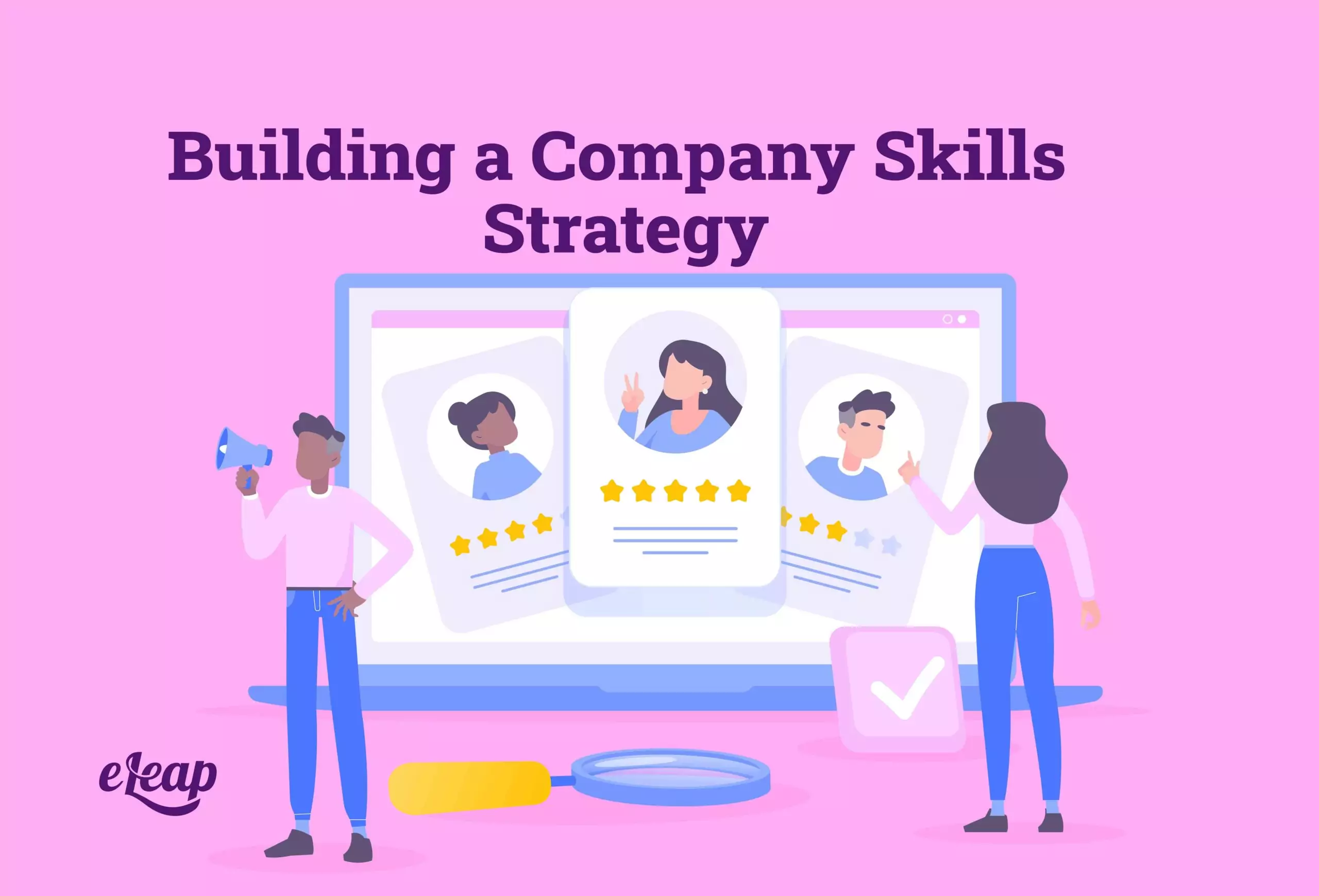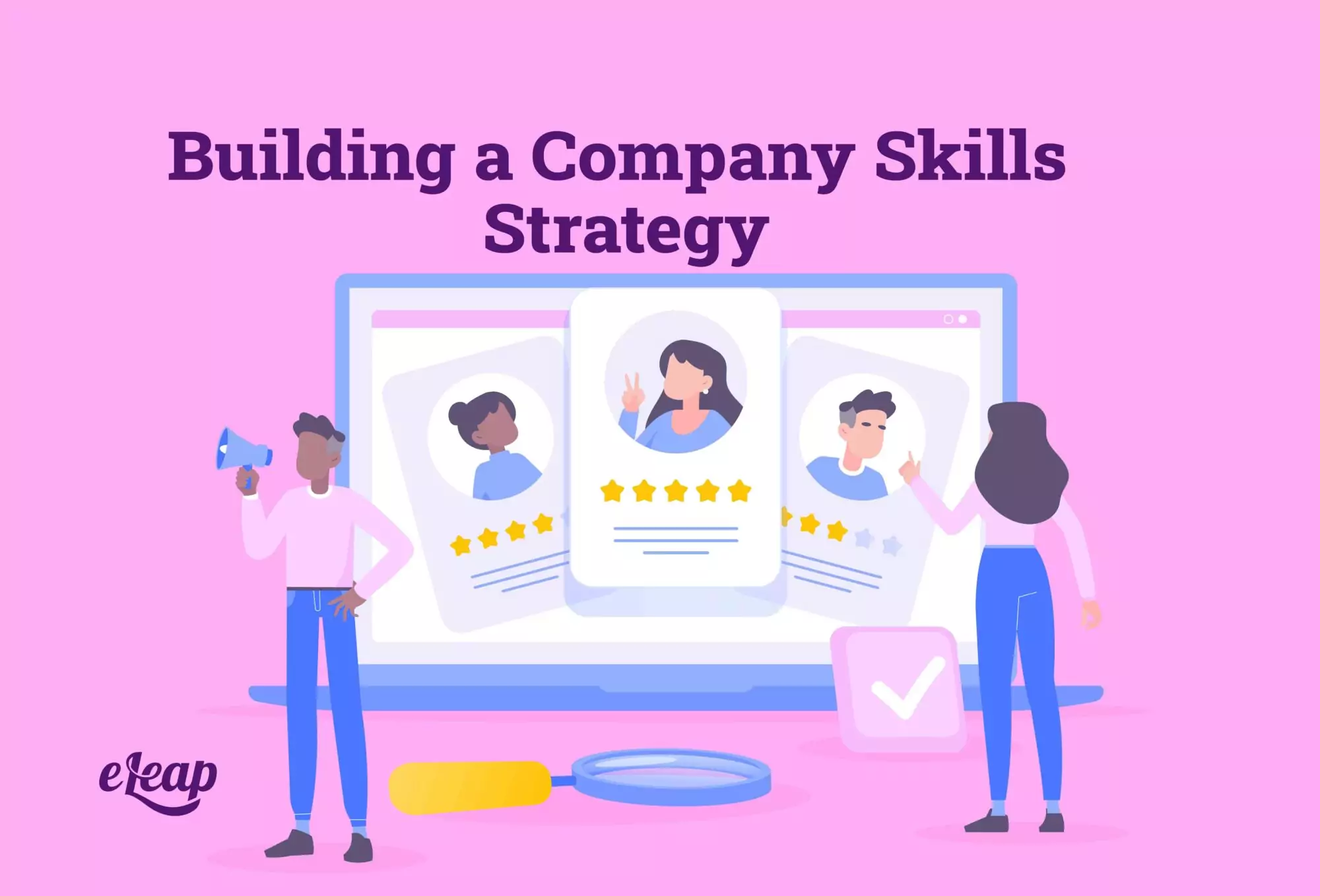Building a Company Skills Strategy

Every organization should have a skills strategy. This process enables companies to decide what relevant skills are needed for employees to efficiently perform their positions, assess what skills these employees already have, and how to sharpen up the current skills and implement new ones.
Many people would argue that having a skills strategy limits an organization in the scope of services they offer or jobs they can complete. This is especially true in the current corporate environment that’s so heavily weighted towards a project-based atmosphere.
However, developing a skills strategy doesn’t have to be limiting at all. Having a broad strategy for an umbrella set of skills helps you recruit and develop team members based on areas of larger areas of efficiency. Once they’re inside your organization, these skills can be further niched down to successfully place them within the right departments or on the right team.
If you want to develop an effective skills strategy, there are several important points you should be aware of, which we’ll cover in the following sections.

Important Points About Skills Strategy
Before deciding how you want to implement your skills strategy, you should understand a couple of vital points about this process.
1. Skills Strategy Is Older Than You Think
There seems to be a common mindset that building a skills strategy is a new process in the corporate world. However, organizations in a wide range of industries have been implementing this process for quite some time.
In the early days of Silicon Valley, companies like Microsoft and IBM emphasized building their employees’ skillsets. Companies in the electricity, oil, and pharmaceutical manufacturing industries have been heavily steeped in skill development as well.
Do you notice a trend or shared characteristic between these industries? A shared theme between each of them is the fact that they’re all industries that place heavy importance on compliance.
This is why new, powerful advances in technology can be incredibly effective in the categories of recruiting and the development of employee skills. Integrating your LMS platform can give you a huge advantage when it comes to developing your skills strategy.
For example, the right LMS can be used to test employees in the form of skill verification. Because skills are industry-specific, many of these tests can be based on operational knowledge. You can even develop certificates that employees earn once the verification process is complete and base each certificate on a different mandatory skill.
2. Skills Shouldn’t be Considered Capabilities
It’s important to be aware of the difference between a skill and a capability. Individuals can develop skills, but this doesn’t necessarily make them efficient in these areas.
For example, an employee could have a list of hundreds of skills they have. While this might look good on a resume, the most important element is understanding how well they know how to use these skills.
Think of it like this: A series of skills together forms a capability. An employee could list “creating spreadsheets in Excel” as a skill. While they may understand how to create a spreadsheet, this doesn’t mean they’re capable of efficiently operating Excel as a whole.
Being efficient at operating Excel requires the knowledge of creating spreadsheets, understanding formulas, inputting certain data, and more. Normally you’re placed within a department of a company because of your capabilities. Understanding what skills employees have allows you to place them on a path towards developing capabilities that will lead them to become effective team members within the right departments.
In current corporate environments, you can use this same formula to place them on the right teams to work on projects where they’ll make the biggest difference.
Developing Your Strategy
The next section is geared towards using the right steps to develop the most effective strategy for your organization.
3. Break Up Your Implementation Strategy
When you’re developing a skills strategy, it’s best to separate this process by department. Even though it’s a company-wide process that involves all of your employees, you can break this up into different teams based on their specific positions.
Your marketing department team should be led by your marketing manager, your sales department led by your sales manager, and so on. This gives each department a chance to work on the same skills but breaks them into specific capabilities based on their specific job demands.
In other organizations, these separate teams are known as “capability academies” and exist as ongoing units to implement the importance of these skills to new hires. Eventually, they’ll develop a uniform method of delivering this information, becoming a critical part of the onboarding process.
4. Skills Projects and Job Matching
The ultimate goal of this entire process is aligning employees with the most relevant positions within your organization based on their skills and learned capabilities after training. However, this can be incredibly confusing depending on the different job titles you have in your company.
Many companies list hundreds of different positions based on the most specific characteristic of each job. For example, one company may have multiple different types of “technicians.” Normally, each position would be listed based on what type of technician jobs are open.
However, when you implement a skills strategy, the most efficient way to hire would be to simply advertise multiple openings for “technicians.” Once you have a fresh pool of new hires to onboard, you can implement your skills strategy using your new capability academies.
After the academy process, you can shift the onboarding process towards your learning management system, where each new hire will become certified in the new capabilities they’ve learned. Finally, it would be up to the manager to place each “technician” into a specific role depending on what area they show the most efficiency.
Alternatively, you can leave this role open if you’re running a project-based corporate atmosphere. This leaves room for new employees to be shifted around, depending on where they’re most needed for each new project.
Clearly, implementing a skills strategy will take consistent focus, effort, and a portion of your budget. However, having the ability to place new hires into the most relevant positions makes your organization more productive and more competitive. In the end, this ends up producing MORE revenue. To start having greater production and an overall increase in the quality of your organization, contact us today for a free consultation!